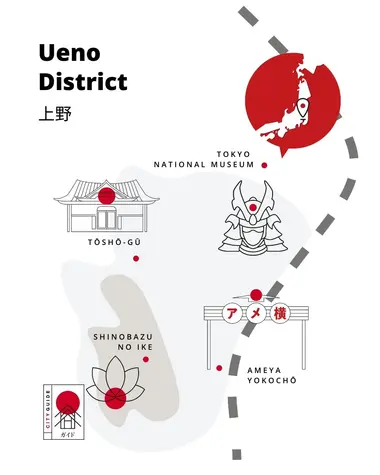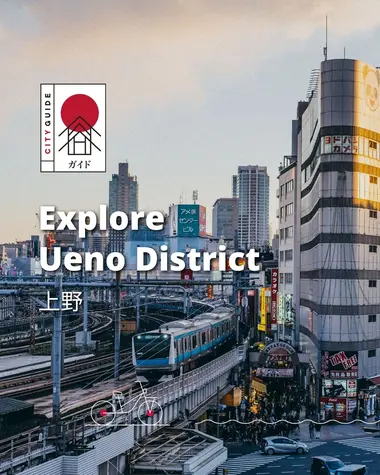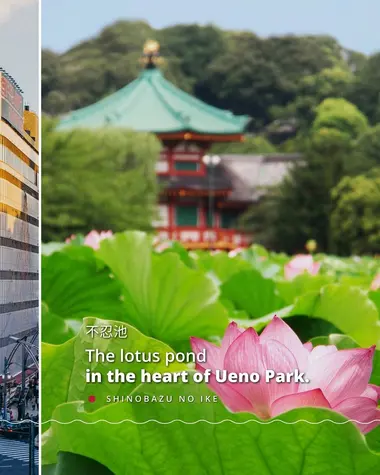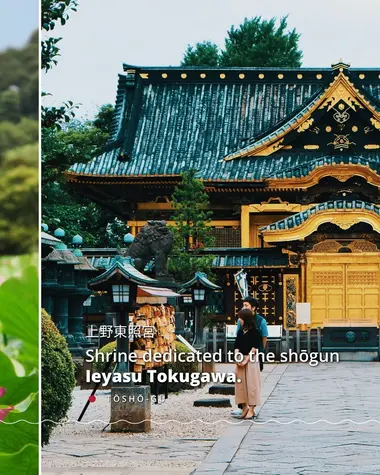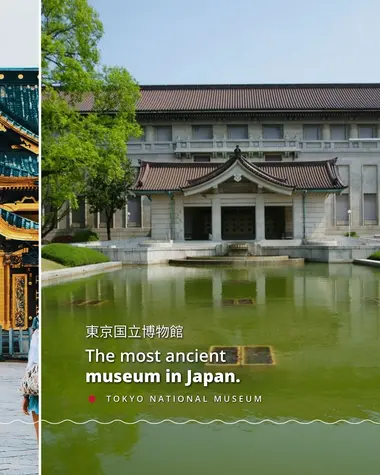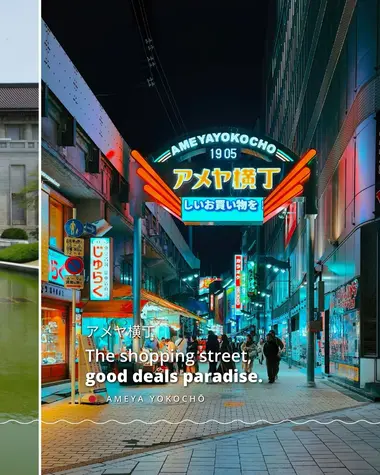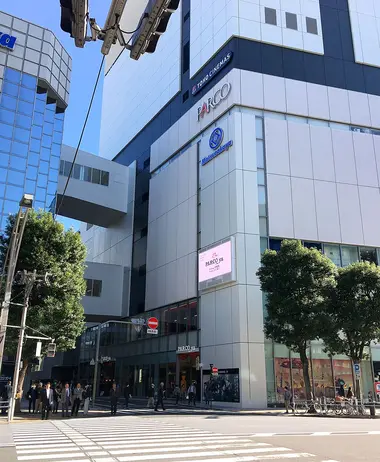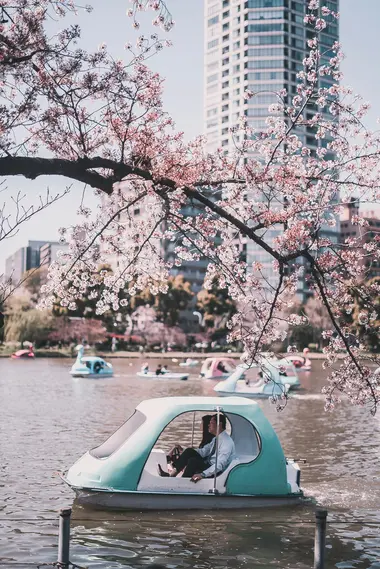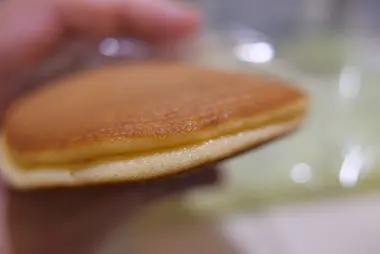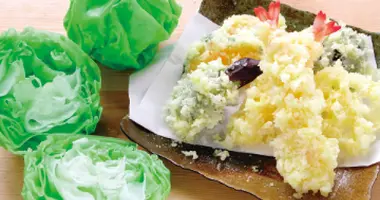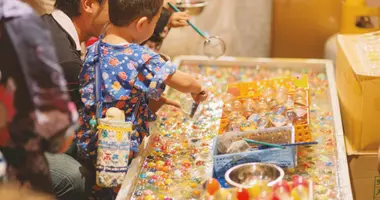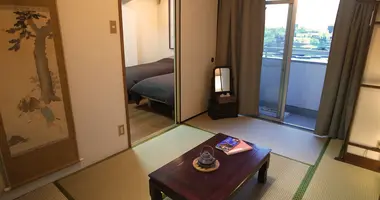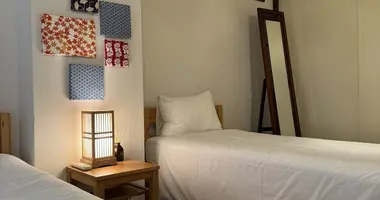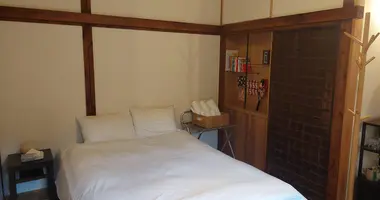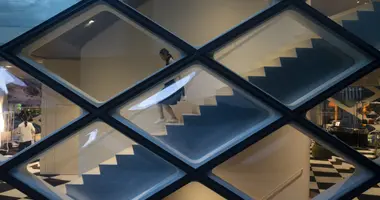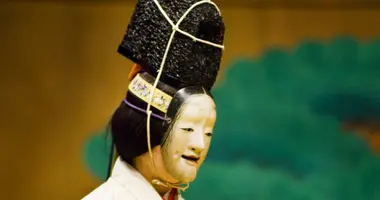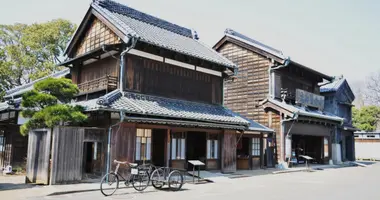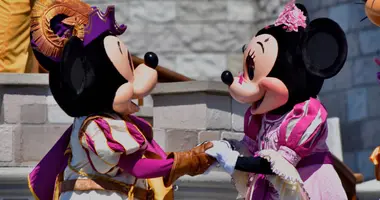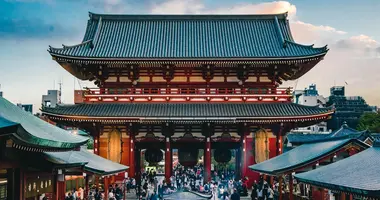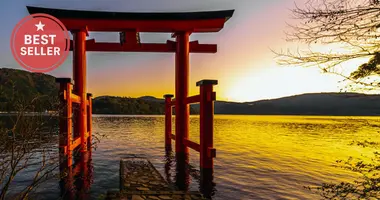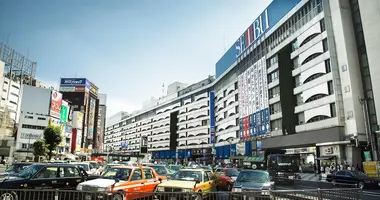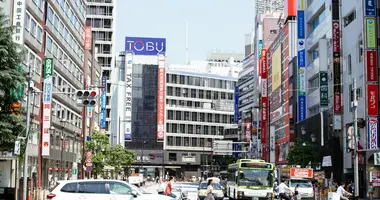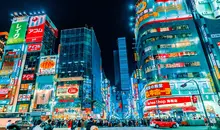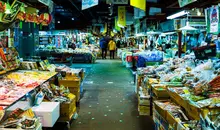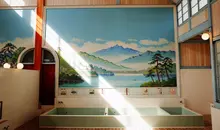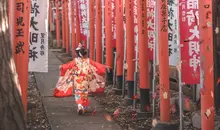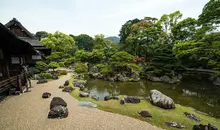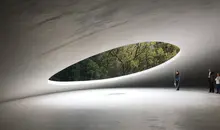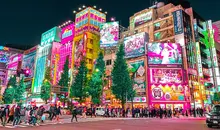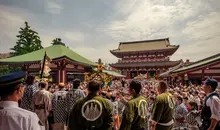The Ueno district: a hub for vibrant culture and rich history
- Published on : 04/09/2025
- by : Phoebe
- Youtube
A must-see in Tokyo, stroll through Ueno
Famous for its park, zoo, and museums, Ueno is a must-see location for leisure in eastern Tokyo. Yet there's much more to this emblematic Yamanote district than its cultural attractions. Here's an in-depth look at a historic area that appeals to travelers and local Tokyoites alike.
What to see, What to do
A haven of greenery
Ueno is particularly popular with families and visitors alike for its green spaces.
- Ueno Park: Established in 1873, this is one of Japan's oldest parks. With its countless cherry trees, it's very popular in spring. It is home to several museums and shrines, as well as numerous festivals throughout the year.
- Ueno Zoo: Opened in 1882, this is Japan's first zoo. Its giant pandas delight visitors. The zoo is currently home to over 300 species of animal.
- Shinobazu Pond: This natural pond is made up of three parts: the lotus pond, covered with large green leaves in summer; the duck pond, for birdwatching; and the boat dock, where you can rent boats to cruise the waters. At its center, you can admire the Bentendō shrine, dedicated to Benzaiten, goddess of music and fortune.
See Tokyo from a different angle with an expert guide to the capital
Would you like a tour of Tokyo with a local expert? Our guided tour is for you.
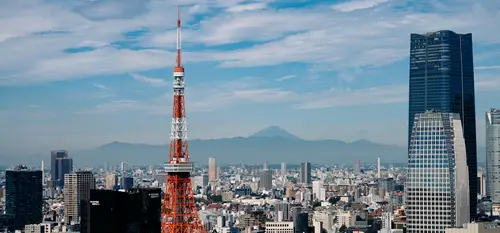
View of Mount Fuji from Tokyo
Unsplash
A place of culture and heritage
For cultural outings, Ueno is the place to be!
- Tosho-gu Shrine: Built in 1627, it is dedicated to the shogun Tokugawa Ieyasu, founder of the Edo shogunate (1603-1868). The shrine is lined with over 200 stone lanterns and is best appreciated in spring, when the cherry blossoms are in bloom.
- Tokyo National Museum: Japan's oldest and largest museum, with an exceptional collection of Asian art and archaeological objects.
- National Museum of Western Art: Designed by architect Le Corbusier, this monument is a UNESCO World Heritage Site. It features European masterpieces from the Middle Ages to the 20th century, such as those by Rodin, Monet, and Van Gogh.
- Tokyo Metropolitan Art Museum: The museum hosts numerous temporary exhibitions, ranging from the great masters to contemporary Japanese and international artists.
- National Museum of Nature and Science: This interactive museum is a great choice for families. From dinosaurs and astronomy to the flora and fauna of Japan, it showcases a wide range of subjects in a playful way, with scale models and child-friendly experiments.
- National Museum of Asian Art (Heiseikan and Toyokan, part of the Tokyo National Museum): The museum includes several sections dedicated to Asian art and archaeology.
- Museum of the Art of Japanese Calligraphy (Tokyo Calligraphy Museum): This lesser-known museum, located near the park, exhibits works related to the art of writing.
Shopping
Although the streets around the station are full of stores, Ueno is also home to a number of shopping malls.
Shopping malls
- Atre Ueno: Located inside Ueno Station, Atre Ueno is divided into two parts: the East Wing, offering a full range of cafes and souvenir stores, and the West Wing, specializing in fashion and accessories.
- Ecute Ueno: Also inside the station, this shopping center offers a wide variety of stores, from restaurants to fashion boutiques.
- Ueno OIOI (Marui): Just a 2-minute walk from the station, Ueno OIOI is a modern shopping center with a multitude of fashion stores and cafes. The 9th floor offers upscale dining options, including a yakiniku restaurant and chic Japanese cafes.
- Parco Ueno: This shopping center is home to over 70 fashion, lifestyle, and restaurant stores.
- ABAB Ueno: Spanning 8 floors, this building is dedicated to women's fashion.
Our recommendations
Outside the shopping malls, here are a few good addresses:
- 2k540 Aki-Oka Artisan: A unique retail space showcasing local artisans and designers.
- Hinoya: Located on the Ameya-Yokochō (Ameyoko) shopping street, this boutique is renowned for its impressive selection of jeans from local brands such as Momotaro, Samurai Jeans, and Sugar Cane. It's a true benchmark for anyone looking for the artisanal quality of Japanese denim!
- Sun House: This boutique specializes in Japanese casual wear. The emphasis is on timeless, made-in-Japan clothing, inspired by military outfits or the Americana of the 1950s-1960s.
A festive district
Ueno is alive with events all year round!
- Gojoten Jinja Reitaisai: This is one of the most important festivals on the calendar. It takes place every year on May 25 at the Gojoten Shrine. Every three years, the event takes on a special dimension with a parade of tengu, long-nosed mythical creatures, carrying a mikoshi (portable shrine) through the streets.
- Ueno Natsu Matsuri: This festival brings the district to life from mid-July to early August. With its traditional performances, it offers a complete immersion in Japanese culture.
- In autumn, Ueno Park is accentuated with vivid colors, attracting many photographers and nature lovers. It's also the season for art exhibitions in the park's museums.
- Winter is no exception, with magical illuminations that transform the park into a fairytale landscape. It's also the time to admire the first plum blossoms, heralding the arrival of spring.
Ameyoko: the lively heart of Ueno
Ameya Yokochô, better known as Ameyoko, is a lively 400-meter-long shopping street linking Ueno and Okachimachi stations. Inherited from the post-war era, this open-air market is now one of Tokyo's most popular!
Away from the malls, a unique shopping experience awaits you at Ameyoko. Clothing, accessories, and spices of all kinds: you'll find it all here, at affordable prices. In some stores, it's even possible to negotiate (a rare practice in Japan)!
The atmosphere is particularly lively, with vendors calling out to passers-by and tempting smells wafting from the street food stalls. In the run-up to New Year's Eve, Ameyoko attracts large crowds. Tokyoites come here to shop for family meals, and the atmosphere becomes electric. Stop by the yakitori stands. Take advantage of the stalls to discover local spices and look for bargains.
Our selection of stores:
- Niki no Kashi: Japanese sweets and snacks paradise at unbeatable prices! Ideal for gourmet souvenirs.
- Ameyoko Center Building: A mini-labyrinth of boutiques featuring discount clothing, bags, cosmetics and accessories.
- Dried fish and spice stalls: Discover the local atmosphere and taste new flavors.
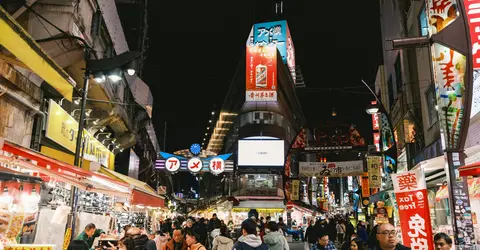
Ameyoko
@Unsplash
Okachimachi, an eclectic branch of Ueno
The Okachimachi shopping district, a 5-minute walk from Ueno station, comprises several distinct areas, each with its own character.
- Avenue Chuo-dori and Okachimachi: This is the district's main thoroughfare. It is home to a number of retail outlets. Among the best-known are Yodobashi Camera, an 8-story electronics and household appliances store, and Takeya Select, a discount store offering a wide range of products.
- Uechun: Parallel to Ameyoko, this relatively quiet shopping alley is known for its second-hand shoe and clothing stores.
- Okachimachi Jewelry District: Located east of Okachimachi station, this small district is home to numerous jewelry and watch shops.
Where to eat?
There are cafes and restaurants of all kinds in Ueno, but it's mainly for its fish restaurants that the district is a sensation.
Sushi restaurants
- Magurodonya Miura Misakiko Ueno: Specializing in tuna, this restaurant is known for its hearty bowls of sashimi.
- Uogashi Nihon-Ichi (Ameyoko): Fast and inexpensive, this tachigui (standing lunch counter) is ideal for a meal on the run.
Japanese cuisine restaurants
- Ippudo Ueno: Popular for its tonkotsu ramen (creamy pork broth).
- Inshotei (in Ueno Park): This is a historic kaiseki restaurant. Enjoy the view over the park.
Cafes and tea houses
- Usagiya Dorayaki: The house is famous for its dorayaki, small pastries filled with red bean paste.
- Coffee Shop Galant : This 1970s kissaten (traditional cafe) is much appreciated for its vintage decor.
- Ueno Sakuragi Atari: Located just a few minutes' walk from Ueno Park, Ueno Sakuragi Atari is a quirky little complex housed in old wooden houses from the 1930s. It houses several cafes, craft stores and local breweries in a retro atmosphere.
- Chaho Kanbayashi: This historic tea house, originally from Kyoto, has a branch in Ueno. We love its top-quality matcha.
Discover our activities in the Ueno district
Where to sleep?
There are no luxury hotels in Ueno. However, there are some good places to spend the night.
Boutique hotels
- NOHGA HOTEL UENO TOKYO: A carefully designed 4-star hotel, about 5 minutes' walk from Ueno station. Rooms feature minimalist design, with elements borrowed from local crafts. There's also a restaurant-bistro.
- Section L Ueno-Hirokoji: A trendy, colorful hotel, perfect for shoppers. Located near Ameyoko, it offers easy access to the area's attractions.
- LANG HOTEL UENO: This small hotel offers modern rooms in a traditional decor. We love the Japanese frescoes on the walls.
Unusual addresses
- The Edo Sakura: A contemporary ryokan located a 10-minute walk from Uguisudani station (near Ueno). It features machiya-stylerooms with modern amenities, offering a traditional Japanese experience in a trendy setting.
- Hostel JAZ: This capsule hotel is modern and minimalist. Ideal for travelers wishing to try a night in a capsule, without suffering from the "dormitory" effect.
- Landabout Tokyo: The hotel presents itself as a "catalyst for links" between travelers and the local community. The cafe-restaurant on the first floor is open to both hotel guests and local residents, offering a convivial space to share a meal.
Neighborhood history and pop culture
The Ueno district has an eventful history. In 1868, it was the scene of fierce resistance by samurai loyal to the Tokugawa shogun against imperial troops. Although the shogunate's supporters were defeated, the episode left a deep mark on the district's identity.
A major turning point came in 1883 with the opening of Ueno station. This new infrastructure opened Tokyo's doors to northern Japan and made Ueno one of the busiest stations in the country. The district grew rapidly, attracting numerous shops and restaurants.
After the Second World War, Ueno became an important cultural center of the city, with the creation of museums and universities, including the prestigious Tokyo School of Fine Arts. At the same time, a more popular area grew up around the station, home to workers and shopkeepers. The Ameyoko market began life as a black market, selling American goods. Later, fish from Tohoku was sold here - a heritage that has made Ameyoko the lively market it is today.
In popular culture, Ueno Park is often seen in the background of a Japanese manga or film to illustrate everyday life. Examples include the film Tampopo (1985), whose market scenes are inspired by Ameyoko, and the manga The Tatami Galaxy, in which the characters sometimes stroll through the city's historic district.
Want to discover other parts of Tokyo? Subscribe to our newsletter and follow us on Instagram.

